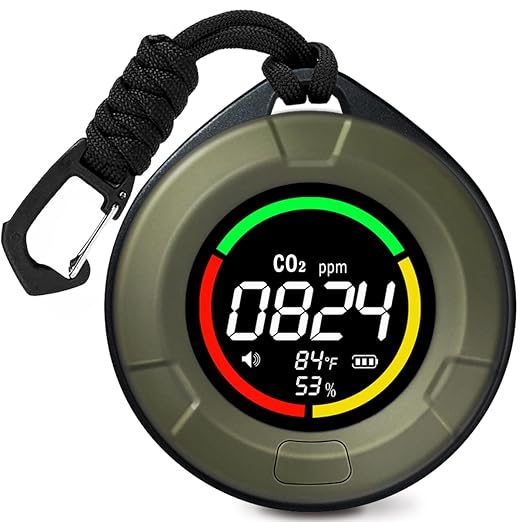A little while ago, my city was covered in smoke from nearby wildfires. I grew up in Austria, where bad air conditions are rare and the mild climate means people don’t usually use air conditioning, so when the haze rolled in, I thought I was being smart by staying inside and closing all the doors and windows. I figured the little tube going through the wall from the AC must be bringing in fresh air.
The fine dust (PM2.5) levels were between 1000 and 1500 — I think you’re supposed to evacuate at these levels — you couldn’t even see 100 meters ahead. Veronica started sealing the doors and windows, but in my opinion she didn’t seal them well enough. Our air purifier wouldn’t go under 500 ppm. So I showed her how it’s done and sealed the windows and doors with tape. Not even the tiniest bit of smoke could get in.
Then we started binge-watching The Mandalorian over the weekend. The door only opened for food delivery, and Furiosa (our boxer dog) had to poop in the shower.
Two days later, I felt a strange sensation in my chest — irregular heartbeats. Shit, it must be the smoke, I thought. Or maybe it was the stress from the smoke — or who knows, something else. So we put on our masks and went to the doctor.
That’s when I learned that air conditioners don’t bring in fresh air. They just cool the air inside —unless you have an expensive HVAC system that includes ventilation.
So I bought a CO₂ detector from Amazon and built my own little HVAC system with tubes, a vent, and a standing AC. Voilà — we had clean air again.
Fast-forward a few weeks later — we go to the gym and suddenly an alarm goes off. Beep, beep, beep — an all-too-familiar sound. It was the CO₂ detector I had forgotten in my bag for some reason.
Closed environments are supposed to be between 400–1000 ppm of CO₂. After that, you start to feel tired, maybe get headaches, and when it gets very high, you will experience increased inflammation and oxidative stress because of the carbonic acid buildup in the blood.
The thing starts beeping at 1500, so I figured it must be a bit high today because the gym was crowded. I opened the bag to turn off the CO₂ detector and had a quick look at the readings before I pushed the off-button — and I couldn’t believe my eyes. 5000. The damn thing stops at 5000. I turned it off, turned it on again — again 5000. Shit.
That’s when I looked around. I’m talking about the biggest, most modern gym in Santa Cruz, Bolivia — 2000 square meters, the best equipment, big glass windows all around. They had those Samsung disc ACs, which I thought were HVACs — but god, was I wrong. Turns out they were just cooler-looking normal ACs, like the one I had at home. All the windows were sealed. The only one that could be opened was in the far corner of the bathroom. And on the door, there was a huge label: Please close the door — air-conditioned area.
I hesitated to tell management, but I had to. I loved this gym — it had everything, and I mean everything, even functional areas, MMA areas, etc. I showed them the CO₂ readings and suggested opening some of the vents they had covered to install their lamps and logos.
Their answer: “Yeah, we know — people just sweat too much and not everybody cares about personal hygiene.” Then they started spraying the whole gym with a vanilla-flavored spray. I looked at them as if they were idiots — and they looked at me as if I was an idiot.
I guess I was the bigger idiot in the end, because I kept training there for a whole month until I moved to a different gym — one that had a proper HVAC system.
If you’ve never looked into it, high CO₂ levels don’t just make you feel tired or dizzy. Over time, they can cause chronic inflammation and oxidative stress — two things that can seriously affect your long-term health. Your performance will not be as high if you are training in a high CO₂ environment. You will need more time to recover between sets. You will get tired faster, which, well, is good for the gym because they will sell more energy drinks.
But now imagine you are a trainer working 8 hours or more a day in this environment. You won’t find a direct link between CO₂ and cancer, but chronic inflammation and oxidative stress are both known to increase cancer risk.
So before you hit the treadmill, maybe think twice about which gym you go to. You’re there for your health, right?
If you care about the air you’re breathing (and you should), here’s what to look out for:
Gyms should be places where you go to improve your health, not risk it. But many have dangerous CO₂ levels because of poor ventilation and overcrowding. Pay attention to the signs, trust how your body feels, and remember — clean air is part of good fitness.

Buy on Amazon